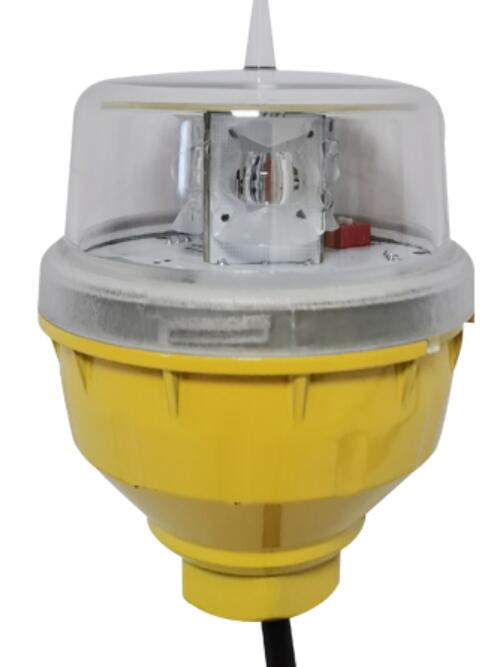Lighting the Way to Safer Skies: The Essential Role of L810 Obstruction Lights
In the world of aviation and infrastructure, safety is a non-negotiable priority. As structures like communication towers, wind turbines, and skyscrapers continue to rise, the need for reliable warning systems to protect aircraft becomes increasingly critical. Among these systems, the L810 obstruction light stands out as a trusted and indispensable solution. Designed to meet stringent aviation safety standards, L810 obstruction lights are a cornerstone of modern airspace safety, ensuring that tall structures are visible to pilots and preventing potential collisions.
What Are L810 Obstruction Lights?
The L810 obstruction light is a specific type of aviation warning light that complies with the standards set by the Federal Aviation Administration (FAA) and the International Civil Aviation Organization (ICAO). These lights are typically used on structures that exceed 200 feet in height, such as cell towers, broadcast antennas, wind turbines, and high-rise buildings. The L810 light is known for its high-intensity red glow, which provides a constant visual cue to pilots, especially during nighttime or in low-visibility conditions like fog or heavy rain.
The L810 obstruction light is designed to be highly durable, energy-efficient, and reliable, making it a preferred choice for marking obstacles in both urban and remote locations. Its robust construction ensures it can withstand harsh environmental conditions, including extreme temperatures, high winds, and prolonged exposure to moisture.
The Importance of L810 Obstruction Lights

The primary purpose of L810 obstruction lights is to enhance aviation safety by making tall structures visible to pilots. As air traffic continues to grow, the risk of collisions with obstacles increases, particularly in areas with dense infrastructure or near airports. L810 lights serve as a critical warning system, reducing the likelihood of accidents and ensuring the safety of passengers, crew, and people on the ground.
Moreover, L810 obstruction lights are not limited to commercial aviation. They are equally important for military operations, emergency medical flights, and the rapidly expanding drone industry. As drones become more prevalent in both commercial and recreational use, the need for effective obstruction lighting has grown, making L810 lights a vital tool for modern airspace management.
| l810 obstruction light |
| l810 obstruction lights |
Key Features of L810 Obstruction Lights
The L810 obstruction light is renowned for its advanced features, which make it a reliable and efficient solution for aviation safety. Some of its key features include:
High-Intensity Red Light: The L810 light emits a bright, steady red glow that is easily visible from long distances, ensuring that pilots can identify obstacles even in challenging conditions.
Energy Efficiency: Many L810 lights now use LED technology, which consumes less power and has a longer lifespan compared to traditional incandescent bulbs. This reduces operational costs and environmental impact.
Durability: Built to withstand harsh environments, L810 obstruction lights are constructed with corrosion-resistant materials and waterproof housings. They can endure extreme weather conditions, ensuring consistent performance.
Compliance with Aviation Standards: The L810 light meets the strict requirements set by the FAA and ICAO, ensuring its reliability and effectiveness in marking obstacles.
Low Maintenance: Thanks to their robust design and long-lasting components, L810 obstruction lights require minimal maintenance, reducing downtime and operational costs.
Applications of L810 Obstruction Lights
L810 obstruction lights are used in a wide range of applications to enhance airspace safety. Some of the most common uses include:
Communication Towers: These structures are equipped with L810 lights to make them visible to aircraft, especially in densely populated or remote areas.
Wind Turbines: As wind farms expand, L810 lights are installed on turbines to prevent collisions with low-flying aircraft.
Skyscrapers and High-Rise Buildings: Tall buildings in urban areas are marked with L810 lights to ensure they are visible to pilots.
Bridges and Power Lines: Long-span bridges and high-voltage power lines are marked with L810 lights to ensure they are visible to pilots.
Airports and Helipads: L810 lights are used to mark obstacles near airports and helipads, ensuring safe takeoff and landing operations.
The Environmental and Economic Benefits of L810 Obstruction Lights
Beyond their primary function of enhancing safety, L810 obstruction lights also offer environmental and economic benefits. The use of LED technology has significantly reduced the energy consumption of these lights, lowering operational costs and reducing their carbon footprint. Additionally, their durability and low maintenance requirements result in long-term cost savings for businesses and governments.
The Future of L810 Obstruction Lights
As technology continues to advance, the L810 obstruction light is expected to evolve as well. One promising development is the integration of smart systems that use IoT (Internet of Things) connectivity to provide real-time data on light performance and environmental conditions. This could enhance safety by enabling proactive maintenance and improving the overall efficiency of airspace management.
Another area of innovation is the use of solar-powered L810 obstruction lights, which can further reduce energy consumption and operational costs. These systems are particularly useful in remote locations where access to the electrical grid is limited.
L810 obstruction lights are an indispensable part of modern airspace safety. They provide a critical visual cue to pilots, helping to prevent collisions and ensure the safe passage of aircraft. With their high-intensity red glow, energy efficiency, and durability, L810 lights have become a trusted solution for marking obstacles in both urban and remote locations.
As air traffic continues to grow and new challenges emerge, the importance of L810 obstruction lights will only increase. By investing in these essential systems, we can ensure that our skies remain safe for all who travel through them. Whether you're a pilot, an air traffic controller, or a telecommunications provider, L810 obstruction lights are a vital tool in navigating the complexities of modern airspace. Let us continue to light the way to safety with innovation and precision.
